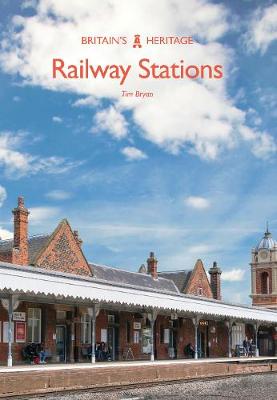Britain's Heritage
2 total works
Railway stations were a prominent feature of most towns and villages in Britain until post-war modernisation and closures swept many away.
The largest and most imposing stations were in large towns and cities. Among the most impressive were the London termini such as King's Cross, Liverpool Street, Paddington and Waterloo. They handled and (still handle) millions of long distance and commuter travellers every year. Elsewhere, larger cities like Birmingham, Manchester and Glasgow often had more than one important station. Behind their imposing facades, they provided all manner of facilities for passengers - waiting rooms, bookstalls, refreshment rooms, luggage and lavatories. Meanwhile, country stations, especially those on branch lines, were an important part of rural life, providing a vital link for goods and passengers to and from the countryside.
As the start and end point of millions of daily commutes, business trips, days out and family holidays, railway stations are undoubtedly among Britain's most special buildings.
This book is part of the Britain's Heritage series, which provides definitive introductions to the riches of Britain's past, and is the perfect way to get acquainted with the railway station in all its variety.
The largest and most imposing stations were in large towns and cities. Among the most impressive were the London termini such as King's Cross, Liverpool Street, Paddington and Waterloo. They handled and (still handle) millions of long distance and commuter travellers every year. Elsewhere, larger cities like Birmingham, Manchester and Glasgow often had more than one important station. Behind their imposing facades, they provided all manner of facilities for passengers - waiting rooms, bookstalls, refreshment rooms, luggage and lavatories. Meanwhile, country stations, especially those on branch lines, were an important part of rural life, providing a vital link for goods and passengers to and from the countryside.
As the start and end point of millions of daily commutes, business trips, days out and family holidays, railway stations are undoubtedly among Britain's most special buildings.
This book is part of the Britain's Heritage series, which provides definitive introductions to the riches of Britain's past, and is the perfect way to get acquainted with the railway station in all its variety.
The most glamorous trains run by railway companies were the high-speed expresses, linking the major towns, cities and holiday destinations. They included overnight sleepers, fast mail trains, excursion specials and boat trains connecting with ocean liners.
These premier trains were the fastest and most luxurious of their day. They generated much publicity, especially in the 1930s when they regularly broke speed records. The names of the most famous expresses still resonate with the public today: the 'Flying Scotsman', the 'Royal Scot', the 'Cornish Riviera Limited' and the 'Atlantic Coast Express'. These and luxurious Pullman services featured the newest and fastest locomotives and the most up-to-date and comfortable rolling stock. The latest technology helped increase express train speeds and reduce travel times, making a journey on an express an experience not to be missed for the well-heeled traveller.
Most of the famous expresses vanished in the 1970s and only a few survive today. Although faster diesel and electric trains now make journeys considerably faster, the overall level of comfort for passengers rarely matches that of their glamorous predecessors.
This book is part of the Britain's Heritage series, which provides definitive introductions to the riches of Britain's past, and is the perfect way to get acquainted with express trains in all their variety.
These premier trains were the fastest and most luxurious of their day. They generated much publicity, especially in the 1930s when they regularly broke speed records. The names of the most famous expresses still resonate with the public today: the 'Flying Scotsman', the 'Royal Scot', the 'Cornish Riviera Limited' and the 'Atlantic Coast Express'. These and luxurious Pullman services featured the newest and fastest locomotives and the most up-to-date and comfortable rolling stock. The latest technology helped increase express train speeds and reduce travel times, making a journey on an express an experience not to be missed for the well-heeled traveller.
Most of the famous expresses vanished in the 1970s and only a few survive today. Although faster diesel and electric trains now make journeys considerably faster, the overall level of comfort for passengers rarely matches that of their glamorous predecessors.
This book is part of the Britain's Heritage series, which provides definitive introductions to the riches of Britain's past, and is the perfect way to get acquainted with express trains in all their variety.

